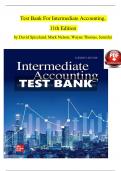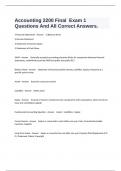Exam (elaborations)
TEST BANK For Intermediate Accounting, 11th Edition by David Spiceland, Mark Nelson, | Verified Chapters 1 - 21 | Complete Newest Version
- Course
- Institution
TEST BANK For Intermediate Accounting, 11th Edition by David Spiceland, Mark Nelson, | Verified Chapters 1 - 21 | Complete Newest Version TEST BANK For Intermediate Accounting, 11th Edition by David Spiceland, Mark Nelson, | Verified Chapters 1 - 21 | Complete Newest Version
[Show more]




